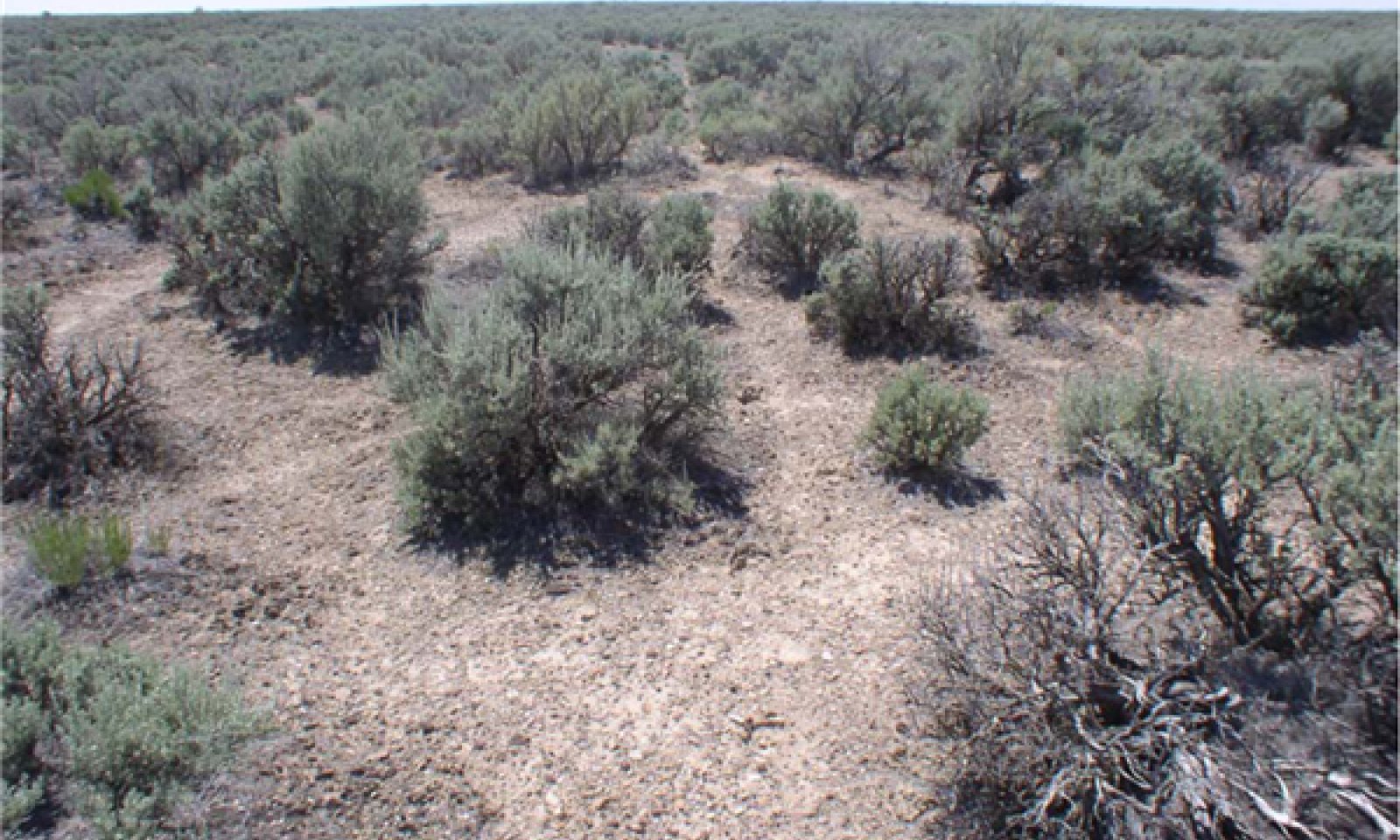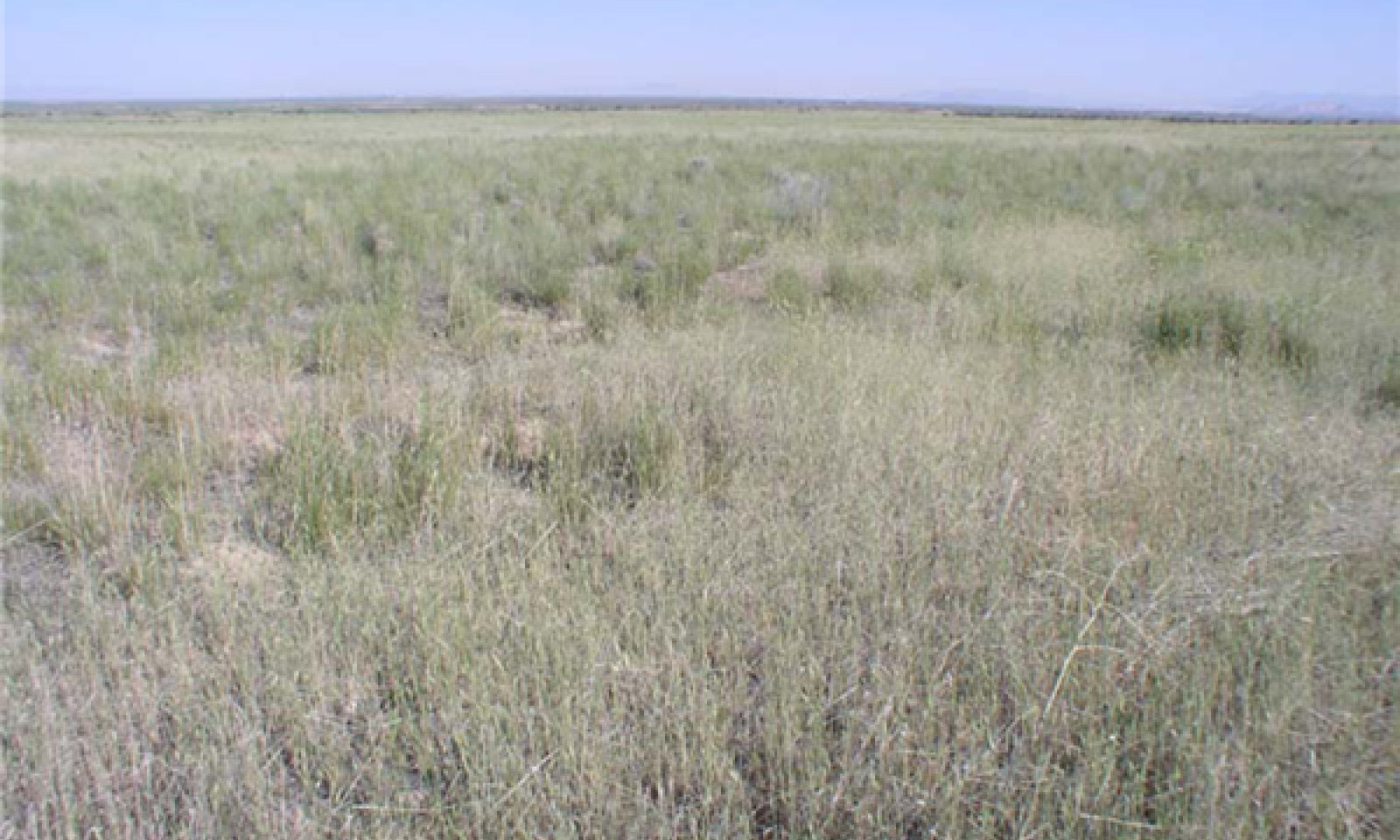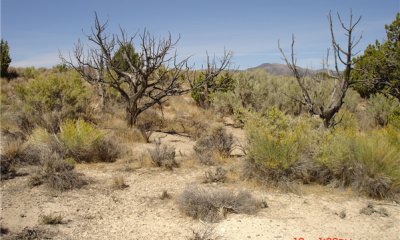
Semidesert Sandy Loam (Wyoming Big Sagebrush)
Scenario model
Current ecosystem state
Select a state
Management practices/drivers
Select a transition or restoration pathway
- Transition T1a More details
- Transition T2a More details
- Transition T2b More details
- Transition T3a More details
- Transition T3b More details
- Transition T4a More details
-
No transition or restoration pathway between the selected states has been described
Target ecosystem state
Select a state
Description
The reference state has three community phases that are influenced by drought, fire or other disturbances. Fire typically favors resprouting shrubs like horsebrush and grasses. Drought typically decreases grasses in the understory and insect damage can reduce shrub cover.
Submodel
Description
Plant communities in this site can include native and acclimatized, naturalized and invasive non-native species. This site is irreversibly changed from the reference state because these non-native species will now remain a permanent part of the community.
Submodel
State 3
Non-sprouting Shrub and/or Utah Juniper/Invasive Annual State



Description
Non-native annual grasses dominate the understory with few native bunch grasses remaining in the community. Shrub layer is dominated by Wyoming sagebrush in a greater cover than is seen in state one or two. This state is caused by lack of disturbance in the shrub layer (fire or insects) and removal of bunchgrasses in the understory (typically season long grazing) that are replaced with invasive, non-native annual grasses.
Submodel
Description
Sprouting shrubs can dominate the shrub layer in this state. The understory is almost entirely comprised of annual non-native species.
Submodel
State 5
Seeded Range State




Description
This state represents areas that have been seeded with either non-native bunch grasses, like crested wheatgrass (Agropyron cristatum) or other bunch grasses. Shrubs are typically low in cover after a seeding but may return after the seeding.
Submodel
Mechanism
Long-term improper grazing (including, season long overstocking, wrong season, etc.) and/or prolonged drought that removes fine fuels from the site lessening the potential for fire to occur. This allows both sprouting and non-sprouting shrubs such as Wyoming big sagebrush, Fourwing saltbush, Winterfat and Yellow rabbitbrush to increase. Shrubs may become decadent due to age. Indian ricegrass and other perennial bunchgrasses lose vigor and decrease in the community due to shrub competition and grazing pressure. Purple threeawn and Sand dropseed may increase. Utah juniper seedlings and saplings may begin to invade the community if a seed source is available.
The threshold is crossed when there is an introduction of non-native species, primarily cheatgrass and various annual mustards, that become established in the community.
Prior to crossing the threshold, if the site is properly grazed over an extended period of time, native perennial vegetation may recover. Fire frequency can return to within normal range for the site. These events could set the site back into the normal range of variability.
Mechanism
Sustained, long-term period of improper grazing (including season long, overstocking, wrong season, etc.); and/or prolonged drought; reduced fine fuels resulting in the continued lengthening of fire period and a dense shrub and/or tree overstory, significant reduction of native perennial vegetation and an increase in invading annuals. Utah junipers may increase to occupy a significant portion of the overstory, if a seed source is present. Wyoming big sagebrush dominates the shrub layer and may be decadent due to age. Indian ricegrass and other perennial bunchgrasses are significantly reduced due to increased shrub competition and/or heavy grazing pressure. Purple threeawn and sand dropseed may increase. The threshold is crossed when invasive annuals such as cheatgrass and annual mustards dominate the understory. The occurrence of fire extends well beyond the normal period for this site.
Mechanism
Long-term improper grazing (including season long, overstocking, wrong season, etc.) and/or prolonged drought; shortened fire frequency allows site to be dominated by sprouting shrubs including Yellow rabbitbrush and horsebrush species. Indian ricegrass and other perennial bunchgrass species are significantly reduced due to increased shrub competition and/or heavy grazing pressure. Purple threeawn and sand dropseed may increase. Highly combustible fine fuels from invasive annuals dominate the community. Fire frequency is typically 10 – 30 years.
Transition T3a


Mechanism
Long-term improper grazing (including season long, overstocking, wrong season, etc.) and/or prolonged drought; shortened fire frequency allows site to be dominated by sprouting shrubs including Yellow rabbitbrush and horsebrush species; significant reduction of perennial bunchgrass species. Highly combustible fine fuels from invasive annuals dominate the community resulting in a shortened fire frequency. Fire frequency is typically 10 – 30 years.
Transition T3b


Mechanism
Mechanical chaining of Utah juniper where present and/or mechanical or chemical treatment of unwanted shrub species. Range seeding of native, introduced or combination of rangeland species.
Model keys
Briefcase
Add ecological sites and Major Land Resource Areas to your briefcase by clicking on the briefcase (![]() ) icon wherever it occurs. Drag and drop items to reorder. Cookies are used to store briefcase items between browsing sessions. Because of this, the number of items that can be added to your briefcase is limited, and briefcase items added on one device and browser cannot be accessed from another device or browser. Users who do not wish to place cookies on their devices should not use the briefcase tool. Briefcase cookies serve no other purpose than described here and are deleted whenever browsing history is cleared.
) icon wherever it occurs. Drag and drop items to reorder. Cookies are used to store briefcase items between browsing sessions. Because of this, the number of items that can be added to your briefcase is limited, and briefcase items added on one device and browser cannot be accessed from another device or browser. Users who do not wish to place cookies on their devices should not use the briefcase tool. Briefcase cookies serve no other purpose than described here and are deleted whenever browsing history is cleared.
Ecological sites
Major Land Resource Areas
The Ecosystem Dynamics Interpretive Tool is an information system framework developed by the USDA-ARS Jornada Experimental Range, USDA Natural Resources Conservation Service, and New Mexico State University.
